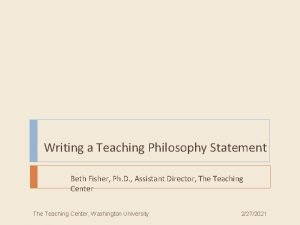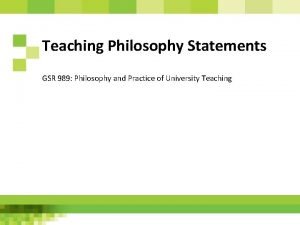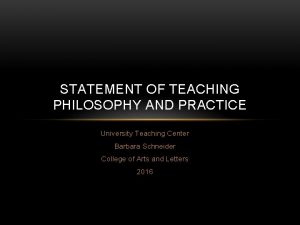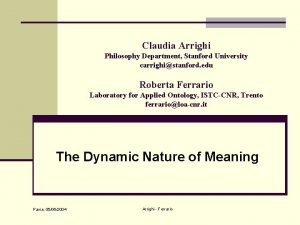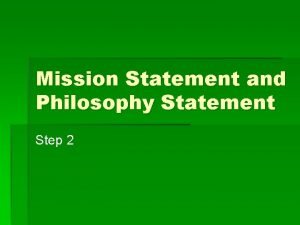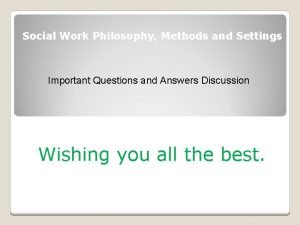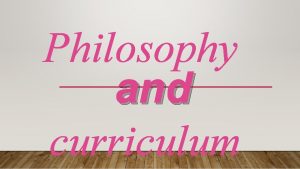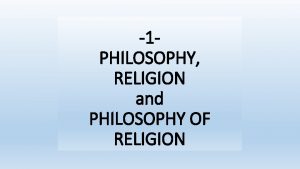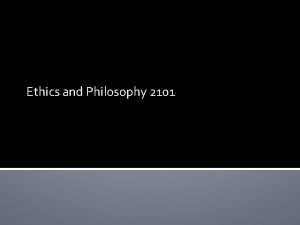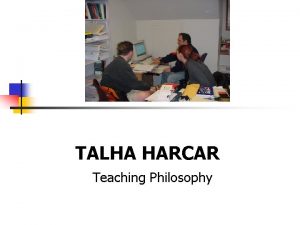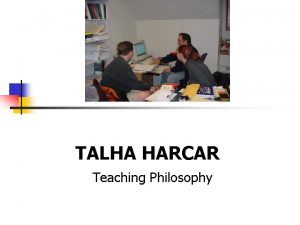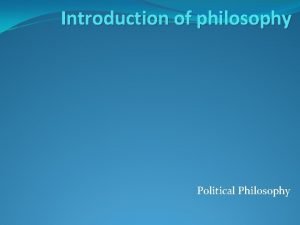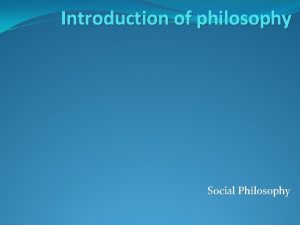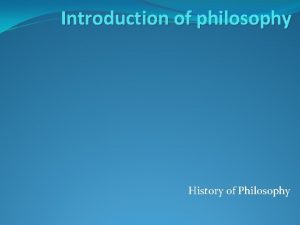STATEMENT OF TEACHING PHILOSOPHY AND PRACTICE University Teaching












- Slides: 12

STATEMENT OF TEACHING PHILOSOPHY AND PRACTICE University Teaching Center Barbara Schneider College of Arts and Letters 2016

OPENING REFLECTIONS • Why do I teach? As you reflect on why you teach, you might ask yourself these questions as well: How do people learn? What do I want them to learn? Why do I want them to learn that?

INTRODUCTION A statement of teaching philosophy and practice usually begins with the personal: A personal anecdote about an experience that prompted an interest in teaching, a statement of personal beliefs that inform teaching, or a statement of personal goals for teaching. Some examples: “When I was a prospective graduate student, visiting one of the Ph. D programs to which I’d been admitted, a professor there asked me what appealed to me about the prospect of a career studying and teaching medieval literature “My teaching philosophy is simple: encourage critical thinking, respect student’s opinions, and challenge and stimulate their interest in politics…. . “I have always viewed teaching as my primary responsibility. I have devoted substantial effort over the years to teaching courses, mentoring students, and participa externally funded programs to improve educational experience.

HOW I TEACH After the statement that introduces a personal philosophy of teaching, the narrative usually moves to an overview---often taking two to five paragraphs— about HOW they teach, and how those strategies enact WHY they teach. This section of the narrative is really a demonstration of theory being put into practice. Sometimes organized around strategies---Sometimes organized around courses----Some examples: “One of my techniques to improve student outcomes has been to increase student engagement in my courses.

HOW I TEACH More examples: “I take full advantage of classroom technology to present video clips, films, and documentaries that serve either as a basis or a complement to the subjects under study. I also have debate sessions and assign group projects both in and out of the classroom-all with the idea of fostering critical thinking and team work. I believe that participation is the key to a student’s success. ” “In short, I required students to write a series of short close readings on a passage of their choice; to submit broad discussion questions most weeks, around which I would plan the class; to write a short paper comparing three translations of a text we read; and to work in small groups to write and submit three possible final exam questions, which we then revised as a group on the final day of class meeting, having planned possible topics on the penultimate class day.

WHAT I TEACH Flip your pages over and recount what courses you usually teach. What are your learning goals in these courses? How do you assess them? Do your assessments provide evidence that students are learning?

HOW I GET BETTER Narratives of struggle or change: “This oftentimes results in lack of participation, low preparedness, and very tedious lectures. This environment can be frustrating and if I am honest, it can make me question my effectiveness as a teacher. I am always looking for new ways to turn my frustrations into learning opportunities not only for my students, but also for myself as a professor. This has led me to independently seek out new research in the education field about teaching techniques and active learning methods. ”

HOW I GET BETTER “However, I am not sure that I am an effective teacher: although highly rated by their evaluations, I do not believe my students consistently achieve performance on the learning outcomes I have set forth. Therefore, I am continuously motivated to improve my teachings skills and to improve student outcomes.

BEYOND THE CLASSROOM Advising Mentoring Professionalizing Lending teaching expertise to other faculty

CONCLUSION: EVIDENCE OF EFFECTIVENESS Student success Student evaluations of teaching Student observers Awards or other recognitions of teaching effectiveness Downstream data---anecdotal or research based Self-evaluation

PATTERNS AND PIECES The critical chunks Why I teach How I teach and how that reflects my philosophy How I am improving my teaching What I teach course by course and how that incorporates expertise How I teach beyond the course Evidence of effectiveness—student success, student evaluations Self evaluation Format: Usually single spaced, running two to six pages Dossier organization is dependent on college

HELP!!! Ask to see the dossiers of more senior faculty Ask your chair Ask colleagues in or outside your department
 Sample philosophy of teaching
Sample philosophy of teaching Teaching philosophy examples
Teaching philosophy examples Teaching philosophy examples
Teaching philosophy examples Social reconstructionists believe that
Social reconstructionists believe that Realism teaching philosophy
Realism teaching philosophy Western electric rules
Western electric rules Teaching pholosophy
Teaching pholosophy Causality
Causality Stanford university philosophy department
Stanford university philosophy department Professional philosophy statement
Professional philosophy statement Physical education mission statement examples
Physical education mission statement examples Social work philosophy statement examples
Social work philosophy statement examples Work philosophy statement
Work philosophy statement
